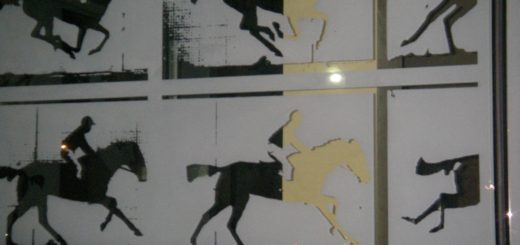Reruns: MEL SHARPLES
This is part of the reruns series of guest posts by guest writer Jason Sparks
MEL SHARPLES
Vic Tayback, “Alice”, CBS, 1976-1985
Had he been the kind of man who did genealogy, he would have known that he was leaning into destiny, that Benoit de Charpelle, a French Huguenot, had been a chef to the Kings of France before leaving that country with his fellow Protestants for the New World. Like so many Huguenots, he found himself in New Orleans, cooking for the wealthy rum and sugar merchants; in the kitchen with slaves, he learned about making a strong, filling staple from beans and rice. No one person can be said to have invented most of the canonical Cajun dishes, but Benoit was there at the beginning of red beans and rice, of roux, of gumbo. They were simple dishes, but hearty, fulfilling; when complimented, he would say in patois, “on travail bon, on mange bon” (who works hard eats hard).
An affair with the wife of a sugar-cane tycoon forced him to flee the city for New York, where he developed deep roots and the Americanized spelling. Always the Sharples men cooked. Alvin Sharples cooked in Depression-era soup kitchens, and at a drugstore soda fountain; a young customer named Edward Hopper could never afford to pay for his soup and sandwich, so Alvin, a soft touch, would take a drawing from him.
Melvin, the son of Alvin, was born in Rego Park in 1933. He didn’t want to cook at first, and so, in 1952, he joined the Army, where the career specialists decided his talents would be best utilized…as a cook. At a mobile hospital in Korea, under the tutelage of an NCO only known to anyone as “Igor”, Mel learned to make the hearty food that he had a genetic predisposition towards making anyway, but to make it quickly, and in bulk. When the war ended, a clerk’s error put him on a troopship headed for San Francisco, where he found work in a Greek diner. Two regulars, Jack Kerouac and Neal Cassady, convinced Sharples to come back East with him by hitch-hiking. He had every intention of making his way back to NYC, but Jack had convinced the group to try the rails for a bit. What Jack didn’t know was that the railroad bulls at the Union Pacific yards in Phoenix were particularly rough. Jack never did know, actually, but Mel found out vividly.
After thirty days in the hospital ward at Maricopa County, Mel, who would never see Jack or Neal again, realized he was what they’d kept saying they were: beat. He didn’t care about seeing New York again, he didn’t care where he was or where his family was or if he had a family. What did matter to him? He didn’t want to admit it: cooking.
The diner wasn’t originally his. When he started there in ’56, it was just a nondescript diner, no name; the neon sign simply said EAT. For the first few weeks, Mel was always just on the cusp of being fired—he was, as far as his employer could tell, nothing but a snot-nosed kid with a bad attitude. Then, Mel made, for the first time in his life, a batch of chili. His normally taciturn boss offered a brief, but thorough review: “Goddamn, son!” It was a transcendent bowl of chili—every bit of the tongue was involved in tasting it, and as it went down, you felt…good. Better than good. You felt like you were home again. Every vegetable, every bean, every hunk of beef, every oyster cracker you could taste and feel individually, and yet as part of the whole. Mel’s chili was added to the menu forthwith.
Mel spent the next decade unofficially apprenticed to his boss; when he wasn’t at the diner, he was using his G.I. Bill to get an Associate’s Degree in Business. At the end of that decade, the owner retired, and the whole joint became—as evinced by the new neon sign—Mel’s Diner. He served truck drivers, hitchhikers, local working stiffs; his only stumbling block was waitresses. Mel suffered no one gladly, and so a waitress lasting six months was nothing short of a miracle. Or so it was until 1971, when Florence Castleberry came to work for him. She could stand up to him, much as she’d stood up to the Puritanical minds back home in Ft. Worth; also, she taught the short-fused Mr. Sharples a few tricks about charming women (without him realizing she had done so). In ’73, he hired Vera Gorman, who was (to use his un-enlightened phrase) a “dingy broad”, but not too dingy; it was she who finally decoded why his chili had the effect that it had, an epiphany she kept to herself, in return for which, Sharples kept her on the payroll. The waitresses solidified as a trio with Alice Hyatt in 1976, who got stuck in Phoenix, just as Mel once had—not that he ever let on as much. The staff at Mel’s remained thus for nearly a decade, during which time they bonded as a family; they even appeared on Dinah Shore, so Mel could fix some of his famous chili on live television.
It surprised his staff, in 1985, when he sold the diner to real-estate developers, but the timing was fortuitous; as it happened, their lives were all about to take different directions. Mel’s life was definitely about to change, in a way he never shared with anyone—he had noticed he was finding it hard to work with his hands. A doctor confirmed it was Parkinson’s, detected early, and Mel would be damned if he was going to be pitied. He sold the diner, and sold the recipe for his chili to General Foods—yes, that Mel’s Chili, in your grocer’s canned meat section, its cost guessed for many years on The Price Is Right, its commercials one of Peggy Olson’s last great forays into ad copy. General Foods, however, made one change in the recipe, which Mel shared with one other person, his live-in personal assistant. The change GF made, but the assistant kept and increased, at Mel’s direction, was one ingredient: Razor-thin slices of psylocybin mushrooms, which liquefied like onions in the chili. In small doses, one didn’t hallucinate, but felt inexplicably comforted; the assistant increased the dose, so that Mel would no longer know he was on the earth, in his traitorous body. He passed in January of 1991, as soldiers were invading Iraq; he heard the voices from CNN and told his assistant to come pick up their orders. Denver omelet, table…
He never did say which table.





















